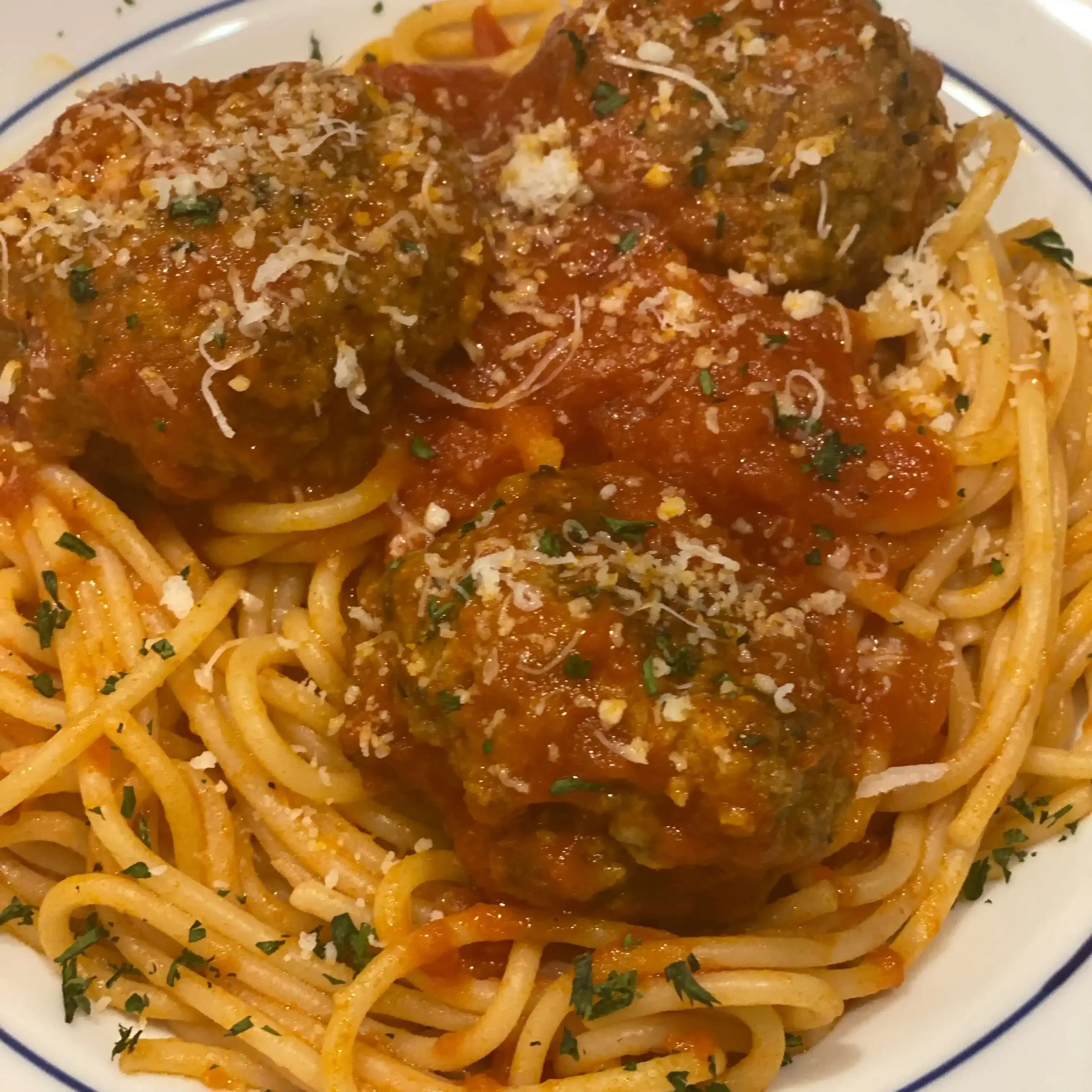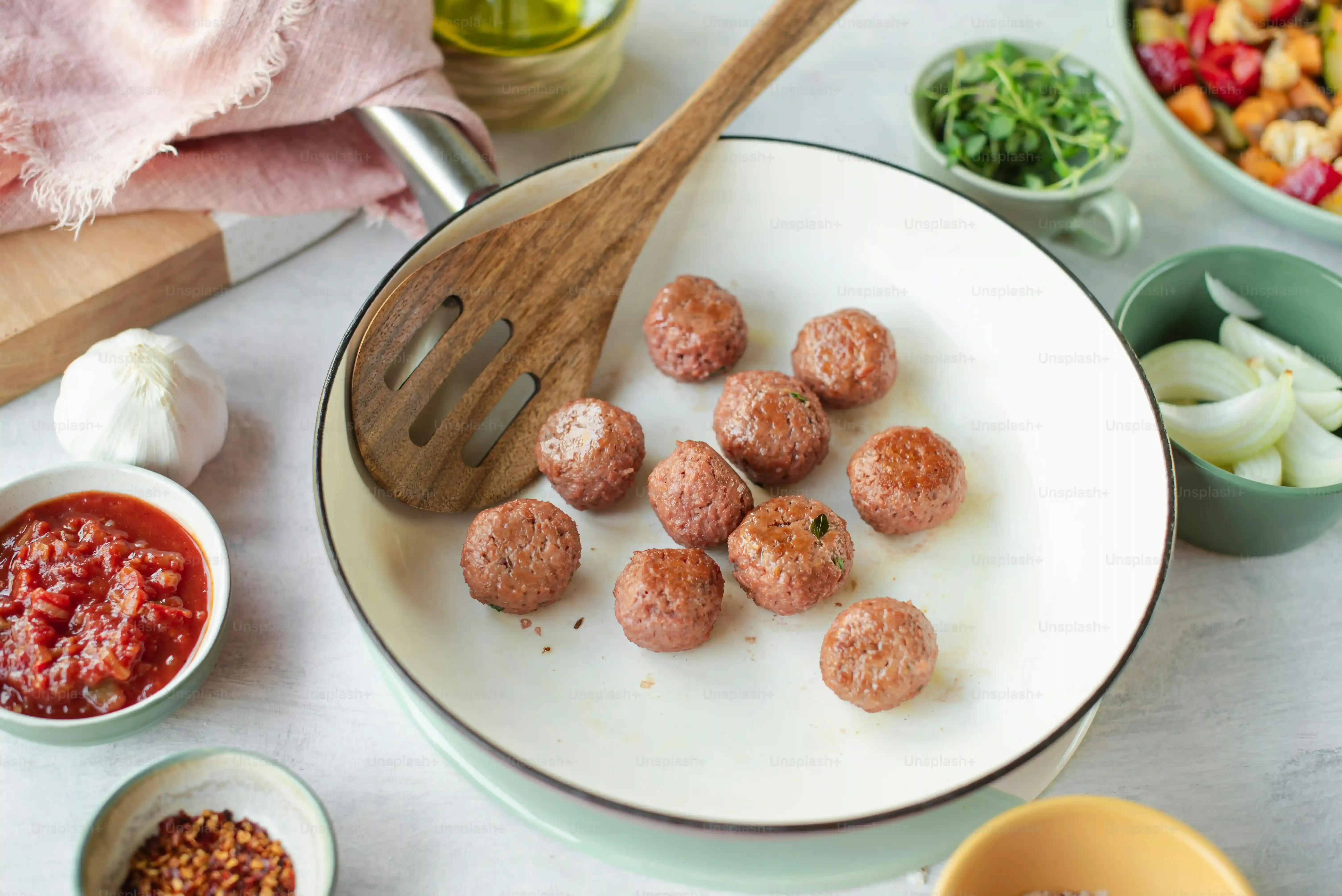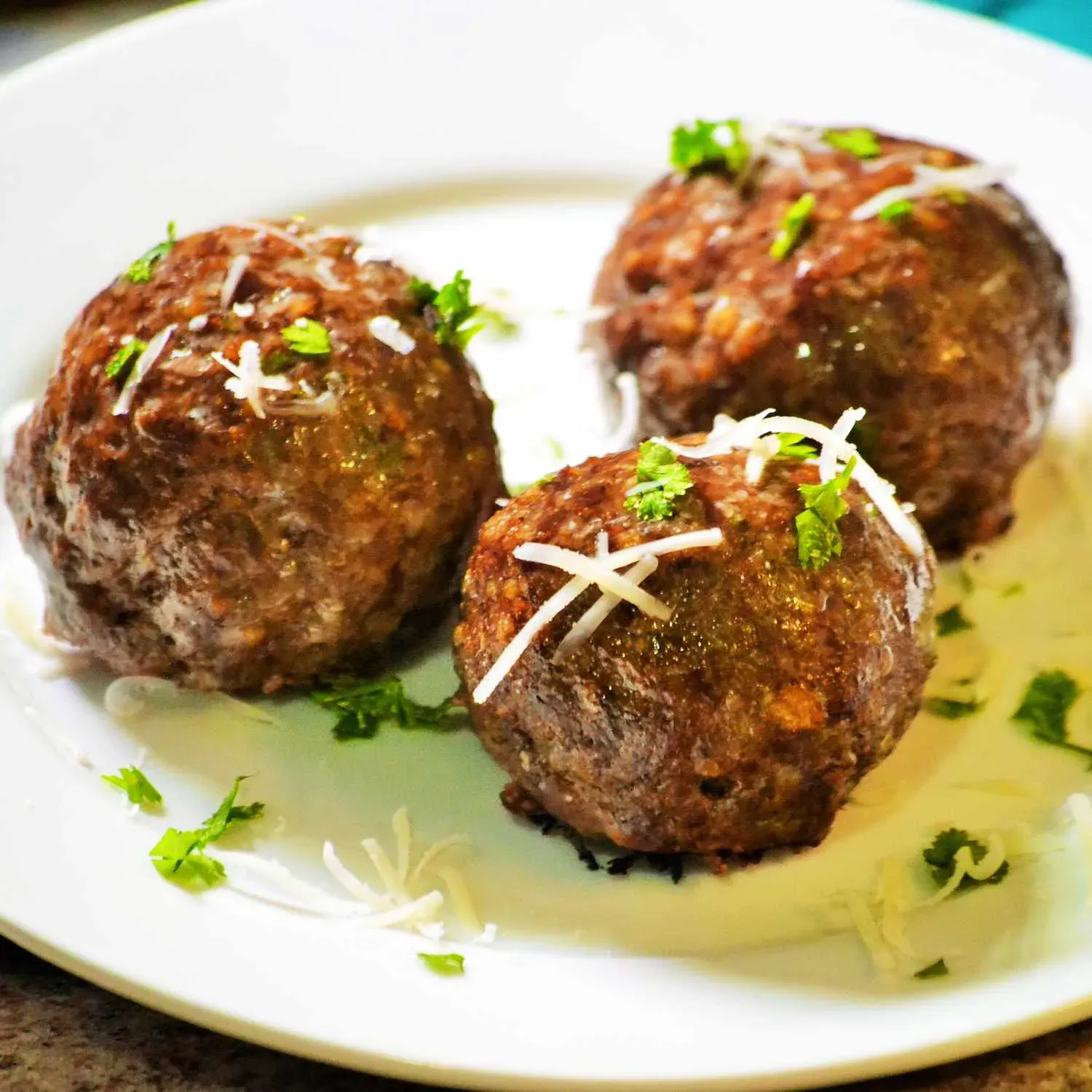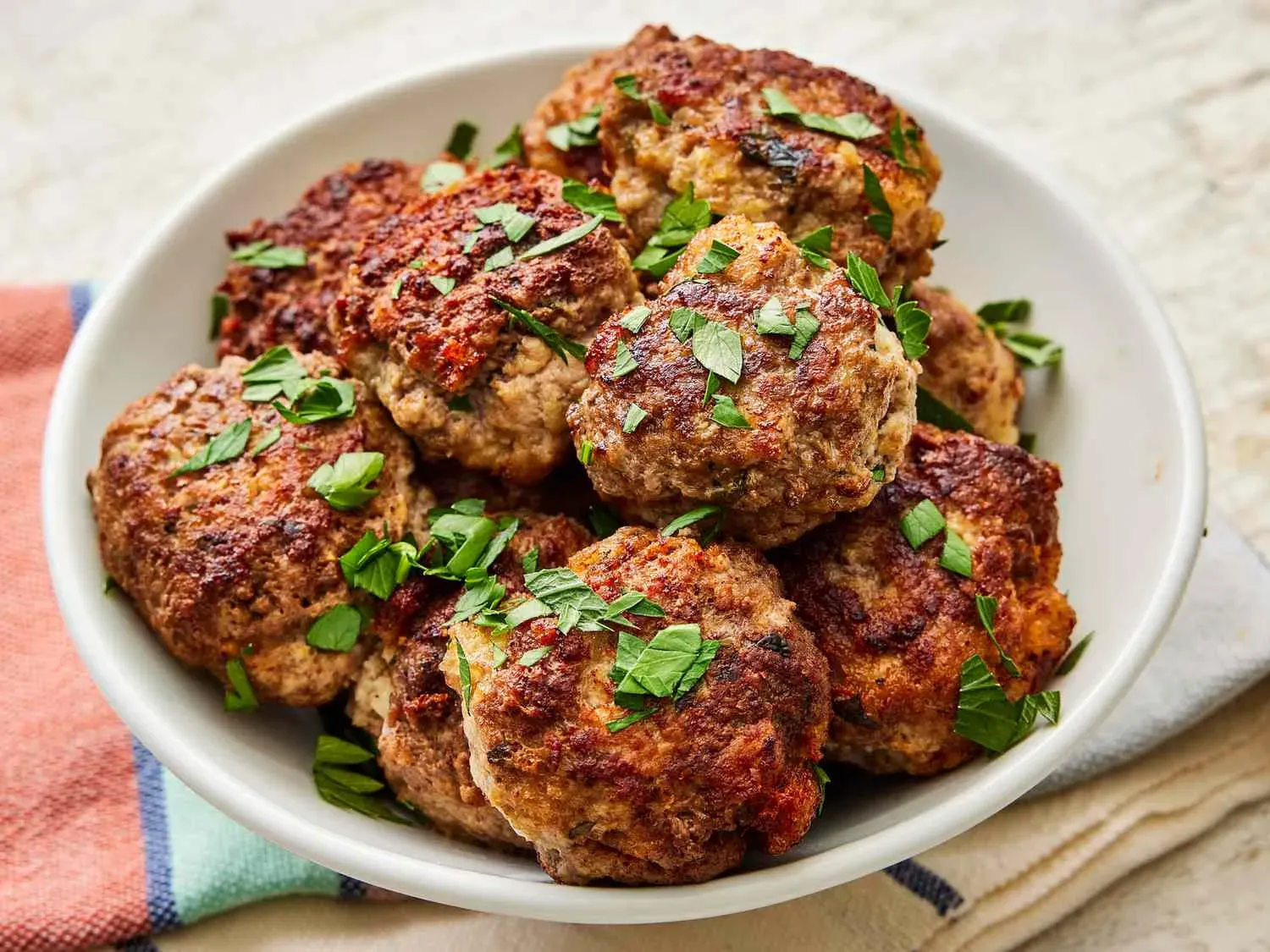Table of Contents
Let's be honest, making meatballs can feel like a culinary minefield. You're aiming for juicy, tender perfection, but sometimes you end up with sad, dense little golf balls. It's a common kitchen tragedy. Forget those frustrating attempts. We're diving deep into a reliable, crowd-pleasing method, focusing on the kind of tried-and-true results you often find when folks rave about an italian meatball recipe allrecipes style. This isn't about chasing some obscure, complicated technique. It's about mastering the fundamentals that consistently deliver meatballs worth fighting over. We'll walk through the essentials – from selecting the right meat to the simple steps that guarantee flavor and tenderness, ditching the guesswork. Get ready to swap those dry disappointments for meatballs that actually live up to the hype. Let's make some sauce-ready spheres that’ll have everyone asking for your secret.
Why This Italian Meatball Recipe (Allrecipes Style) Stands Out

Why This Italian Meatball Recipe (Allrecipes Style) Stands Out
Look, you’ve probably scrolled past a hundred meatball recipes online. So, why bother with this specific italian meatball recipe allrecipes approach? It cuts through the noise. Instead of demanding three obscure types of meat or a secret ingredient you can only find in a hidden Tuscan village, it focuses on solid technique and widely available ingredients. It’s the one that consistently delivers on the promise of tender, flavorful meatballs without requiring a culinary degree or an hour spent frying grease onto every kitchen surface. It tackles the two biggest meatball problems head-on: dryness and density. This method builds in moisture from the start and handles the mixture gently, avoiding that rubbery texture nobody wants. It’s the reliable friend in the chaotic world of online recipes.
Ingredients That Make the Magic Happen for Your Italian Meatball Recipe

Ingredients That Make the Magic Happen for Your Italian Meatball Recipe
Alright, so what actually goes into making these meatballs magic, specifically for this italian meatball recipe vibe? It starts with the meat, obviously. A mix of ground beef and ground pork is pretty standard, giving you both flavor and moisture. Don't go too lean on the beef; that little bit of fat is your friend here, keeping things juicy. Then you need something to bind it and add tenderness – breadcrumbs soaked in milk. This creates a panade, and yeah, it sounds fancy, but it just means wet bread that keeps the meatballs from turning into little rocks. You also need eggs, finely minced onion (cooked first, please, nobody wants crunchy raw onion bits in their meatball), Parmesan cheese for that salty, nutty depth, and your essential herbs and spices like garlic, parsley, salt, and pepper. These aren't exotic items; they're kitchen staples that, when combined correctly, build serious flavor.
StepbyStep: Nailing Your Italian Meatball Recipe Every Time

StepbyStep: Nailing Your Italian Meatball Recipe Every Time
Getting Your Hands Dirty (Properly)
Alright, you've got your ingredients prepped. Now comes the slightly messy, but crucial, part. First, you need to make that panade – the milk-soaked breadcrumbs. Let them sit for a few minutes to really soak up the liquid. While that's happening, gently combine your ground meats in a large bowl. Don't pack it down like you're building a sandcastle; you want it light and airy. Add the cooked onion, the soaked breadcrumb mixture (squeeze out any excess liquid first!), the eggs, Parmesan, garlic, parsley, salt, and pepper. Now, the key: mix everything together *gently*. Use your hands, but don't overwork the meat. Mixing too much develops the proteins, making the meatballs tough. You're just bringing it all together until it's combined, not kneading dough.
Forming and Baking for Tenderness
Once your mixture is ready and has perhaps chilled for a bit (a little fridge time helps the flavors meld and makes forming easier), it's time to shape them. Aim for meatballs roughly 1.5 inches in diameter. Use a scoop if you want them super uniform, or just eyeball it. Again, be gentle when rolling them. Don't compress them too much. Place them on a baking sheet lined with parchment paper. Why baking? Because it's way less messy than frying and results in a more evenly cooked, tender meatball. Plus, you can cook a whole batch at once. Pop them in a hot oven, around 425°F. They'll take maybe 15-20 minutes, depending on your oven and the exact size. You're looking for them to be browned on the outside and cooked through. Don't overcrowd the pan; give them some space.
Quick Baking Checklist:
- Preheat oven to 425°F.
- Line baking sheet with parchment paper.
- Form meatballs gently, about 1.5 inches.
- Arrange on sheet, leaving space.
- Bake 15-20 minutes, or until cooked through.
Serving Up and Storing Your Italian Meatball Recipe Creations

Serving Up and Storing Your Italian Meatball Recipe Creations
The Main Event: Saucing and Serving
you've baked these beauties from your italian meatball recipe allrecipes adventure. Now comes the best part: getting them into some sauce. Don't just plop them in cold. Simmering them gently in your favorite marinara or tomato sauce is non-negotiable. This isn't just about warming them up; it lets them soak up all that delicious tomato flavor and become even more tender. Give them at least 15-20 minutes in the sauce over low heat. They are, of course, built for pasta. Spaghetti, ziti, rigatoni – pick your poison. Pile a few meatballs on top, spoon over extra sauce, maybe a sprinkle of fresh basil or more Parmesan. It's the classic for a reason.
Beyond the Pasta Bowl
But hey, these aren't one-trick ponies. Your perfectly executed italian meatball recipe creations can go beyond the standard spaghetti situation. Think meatball subs – toasted roll, provolone cheese melted over the saucy meatballs. Absolute comfort food. Or serve them as appetizers on their own with a side of sauce for dipping. They work for parties, potlucks, or just a Tuesday night when you don't feel like a whole pasta production. They're versatile little flavor bombs, ready for whatever culinary mission you assign them.
Here are a few ways to serve them:
- Classic with spaghetti and marinara
- Meatball subs with melted cheese
- As appetizers with dipping sauce
- Over polenta or creamy mashed potatoes
- Chopped up in a hearty soup
Keeping Them Fresh: Storing Your Meatballs
Got leftovers? Lucky you. Storing these meatballs from your italian meatball recipe is straightforward. Once they've cooled completely, you can stash them in an airtight container in the refrigerator. They'll be good for about 3-4 days. They reheat beautifully, especially if you warm them gently in sauce again. For longer storage, freezing is your friend. You can freeze them cooked, either plain or in sauce. If freezing plain, spread them on a baking sheet first until solid, then transfer to a freezer bag or container. This keeps them from sticking together. Frozen plain meatballs are best used within 3 months; in sauce, they might last a bit longer, maybe 4-6 months, though quality can start to decline after that. Just thaw them in the fridge overnight before reheating.
Common Questions About Your Italian Meatball Recipe Adventures

Common Questions About Your Italian Meatball Recipe Adventures
Why Did My Meatballs Turn Out Dry?
Ah, the classic dry meatball dilemma. It's the culinary equivalent of a flat tire – frustrating and easily avoidable with the right prep. Usually, this comes down to a few things. You might have used meat that's too lean; remember, fat equals flavor and moisture. Or maybe you skipped or skimped on the panade (the milk-soaked bread). That wet bread is the secret weapon for keeping things tender. Another culprit is overmixing; beating the meat mixture like it owes you money develops the proteins too much, leading to a tough, dry result. Gentle hands are key when combining ingredients for your italian meatball recipe success.
Here are common reasons for dry meatballs:
- Using overly lean ground meat.
- Not enough panade (milk-soaked bread).
- Overmixing the meat mixture.
- Overcooking them, either in the oven or the sauce.
Can I Fry These Meatballs Instead of Baking?
Look, you *can* fry them, technically. People have been frying meatballs for centuries. But for this specific italian meatball recipe approach, which is aiming for ease and consistent tenderness without a grease bath, baking is superior. Frying gives you a lovely crust, sure, but it's messier, harder to cook them through evenly without burning the outside, and honestly, baking just locks in moisture better for that tender interior we're after. Plus, who wants to stand over a splattering pan when you could just pop them in the oven and walk away? Save the frying for something that actually needs it.
What's your biggest meatball-making headache?
Your Meatball Mission Accomplished
So there you have it. No more cardboard meatballs or dry, crumbly disappointments. By paying attention to the simple details – the mix, the chill, the baking – you've got a solid handle on an italian meatball recipe allrecipes enthusiasts would nod approvingly at. These aren't just meatballs; they're proof that a little care in the kitchen goes a long way. Enjoy the fact that you've just elevated your pasta night, your subs, or just your snack game. Go forth and ball.